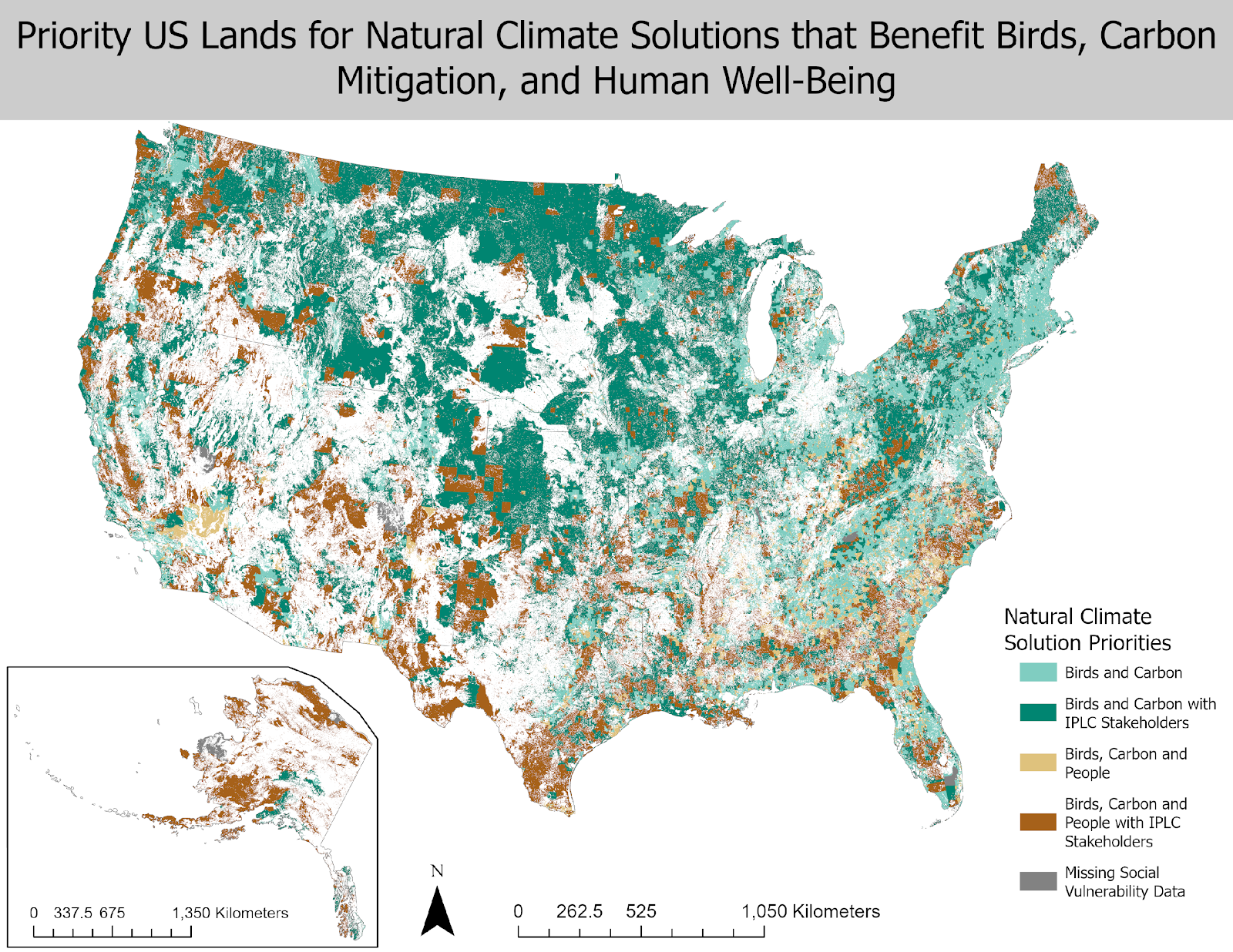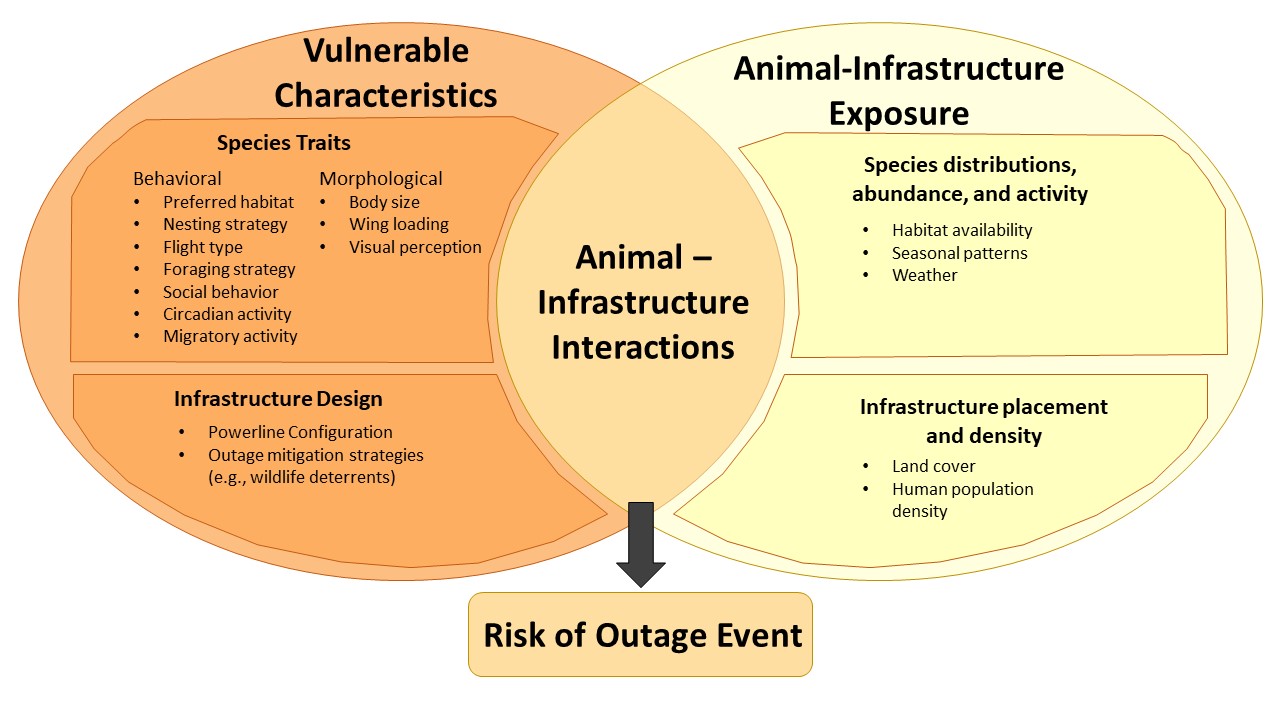Ongoing Research
Where are conservation opportunities that benefit biodiversity, climate mitigation, and human communities?
In this collaboration with the National Audubon Society Science Team, we identified climate strongholds for birds, areas with high carbon mitigation, and vulnerable human communities and looked for areas where these three priorities overlapped across the continental US and Alaska. We also looked at areas with Indigenous Peoples and Local Communities (IPLCs), communities that depend on the land for cultural preservation and livelihoods. The result was a map of national conservation priorities for birds, climate mitigation, and human well-being. We highlighted areas where IPLCs are prevelant, as these areas will be especially important for collaborative conservation and re-thinking what “counts as successful conservation.

Past Research
Can patterns in bird populations help identify risks to the electric grid?
There is a gap in studies investigating animal-related power outages due to a lack of fine-resolution data for animal populations. In many cases, biological data is collected far less frequently than data on human systems like the power grid. We aimed to test whether community science data such as eBird could fill this data gap by using species distribution models. This project brought together ecologists from the Lincoln Park Zoo and Cornell University and electric grid experts from Tufts University in an effort to look for spatial and temporal patterns in the severity of animal-related outage events (AROs) and how they corresponded with fluctuations in bird abundances.

Do bird abundance indicators from standardized surveys and community science projects remain consistent at finer spatial and temporal resolutions?
In order to integrate data across different scientific domains, datasets need to be flexible to meet different spatial and temporal resolutions. Additionally, interactions between human and natural systems occur at fine scales such as within-year, seasonal patterns. Community science databases such as eBird allow for ecological data to be modeled at finer resolutions. Here we investigate the reliability of eBird and the more comprehensive North American Breeding Bird Survey (BBS) for estimating patterns at finer resolutions, inter-annual changes in abundance within town boundaries. Using a case study of 14 focal species within Massachusetts, we calculated four indices of annual relative abundance using eBird and BBS datasets, including two different modeling approaches within each dataset. We compared the correspondence between these indices in terms of multi-year trends, annual estimates, and inter-annual changes in estimates at the state and town-level. We found correspondence between eBird and BBS multi-year trends, but this was not consistent across all species and diminished at finer, inter-annual temporal resolutions. We further show that standardizing modeling approaches can increase index reliability even between datasets at coarser temporal resolutions. Our results indicate that multiple datasets and modeling methods should be considered when estimating species population dynamics at finer temporal resolutions, but standardizing modeling approaches may improve estimate correspondence between abundance datasets. In addition, reliability of these indices at finer spatial scales may depend on habitat composition, which can impact survey accuracy.
